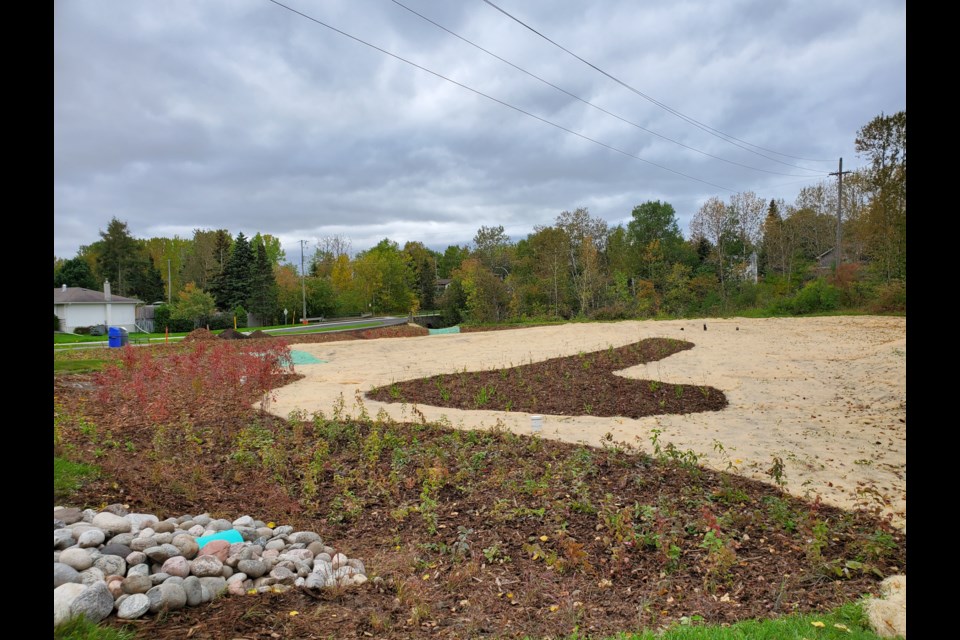THUNDER BAY — The City of Thunder Bay has transformed what was once just an empty field into a showcase for its efforts to increase its "green infrastructure" while preparing for climate change.
An urban rain garden on Hinton Avenue near McVicar Creek – the largest facility of its kind in the city – is nearing completion.
The rain garden has a footprint of 2,500 square metres and encompasses a drainage area of 2.58 hectares (6.4 acres).
It will treat approximately 7,500 cubic metres of rainwater annually, water which previously drained directly into the creek without pollutants being removed.
The project includes an underground pre-treatment device called an oil-grit separator along Hinton Avenue which will remove contaminants from road runoff before water enters the facility.
Several different kinds of plantings are incorporated in the rain garden: a special stormwater seed mix, perennials, shrubs, and trees.
Project Engineer Aaron Ward said the city's green infrastructure plan is part of a larger effort to address the impact of climate change on Thunder Bay.
"Specific for this facility, it also addresses flooding within McVicar Creek. In addition to cleaning the water, it also provides additional flood storage, which will reduce flooding downstream," he said.
The rain garden will provide 375 cubic metres of new flood plain storage capacity.
A Canada/Ontario funding program for wastewater cleanup covered 75 per cent of the project's $235,000 cost.
The Hinton Avenue facility is the third of seven urban rain gardens the city is developing as part of its long-range plan to manage stormwater runoff.
Two were installed last year at Winnipeg Avenue and Beverly Street, and at Parkway Drive and Edward Street. The remaining four will be built next year.
The city now has a total of 25 green infrastructure stormwater facilities of various types.
More than 500 locations will be developed over the next two decades.
Urban rain gardens are designed to manage essentially the first inch of water that falls during a storm.
This covers 90 per cent of the rain events that happen in Thunder Bay, but not a storm on the scale of the May 2012 event that left parts of Thunder Bay inundated.
In a previous interview with Tbnewswatch, Ward said "During the 100-year storms this will help, but won't solve it by itself. The hope is that by building a lot of these now, they start to have a cumulative effect."
